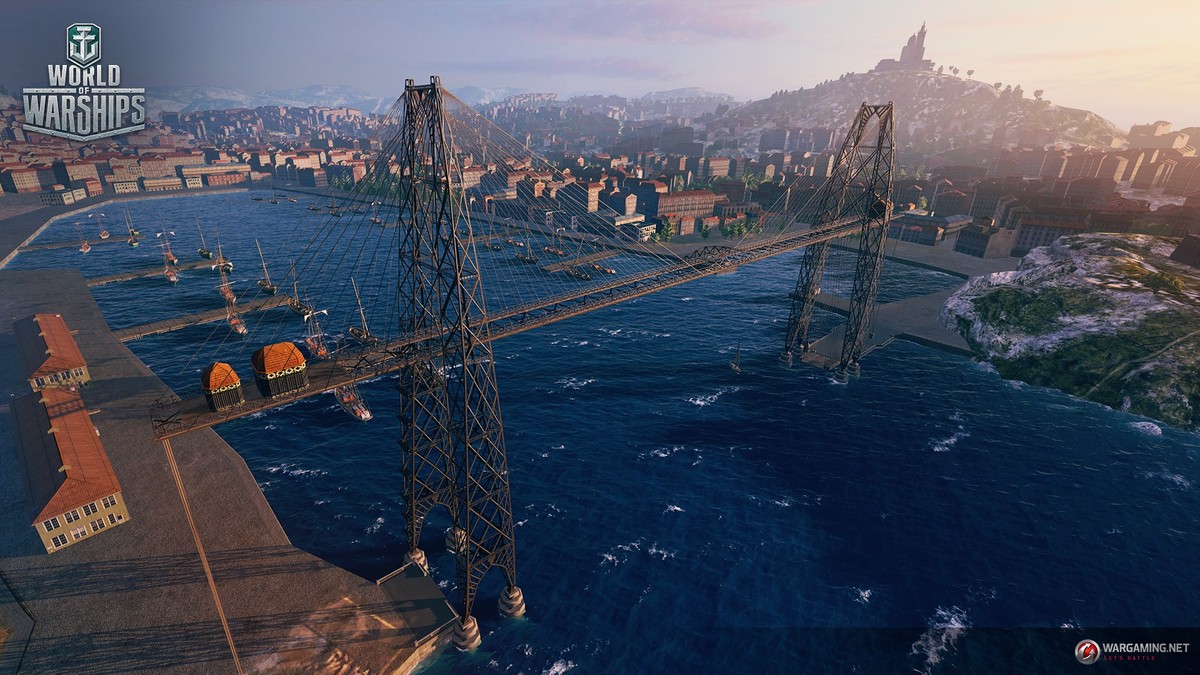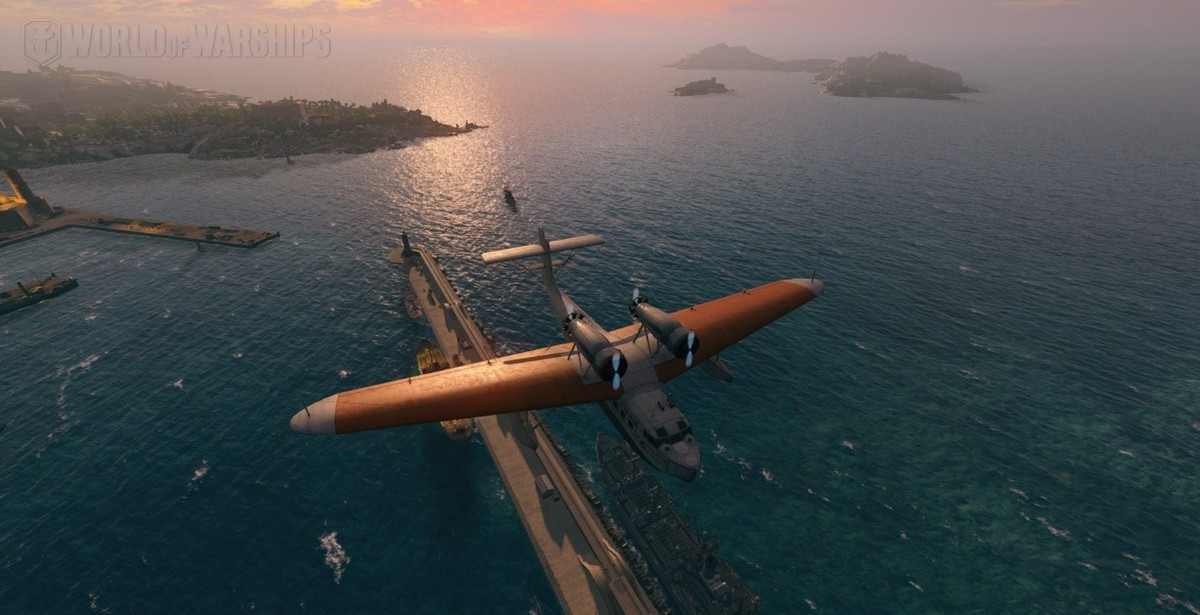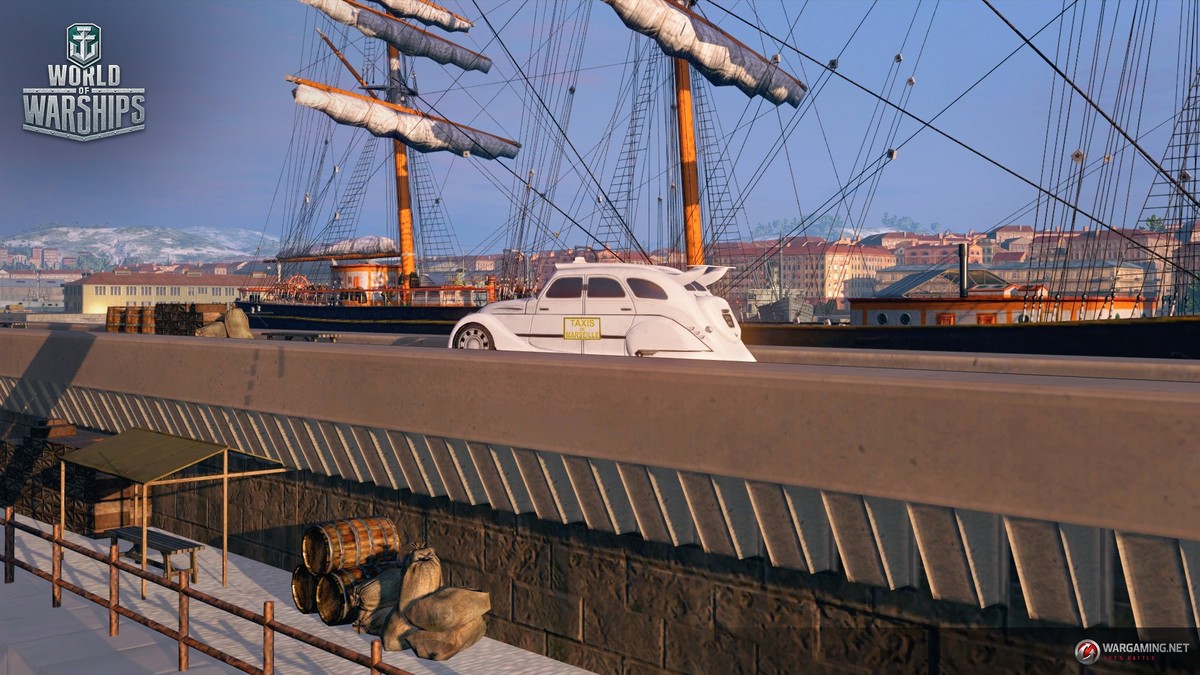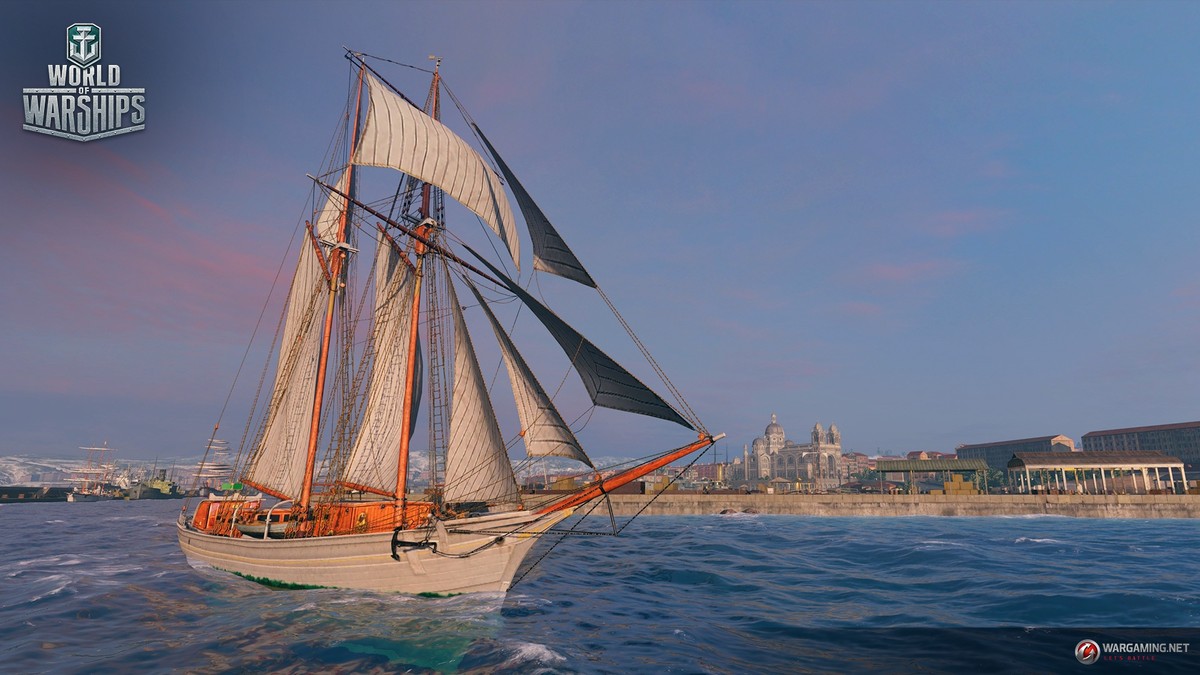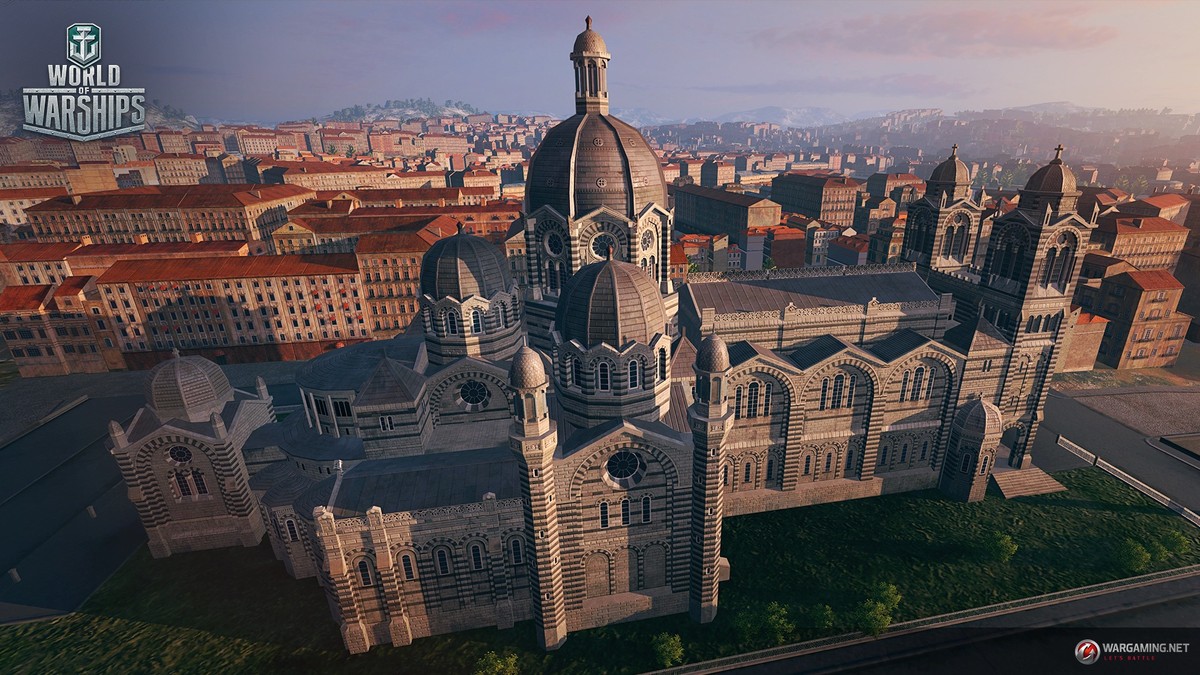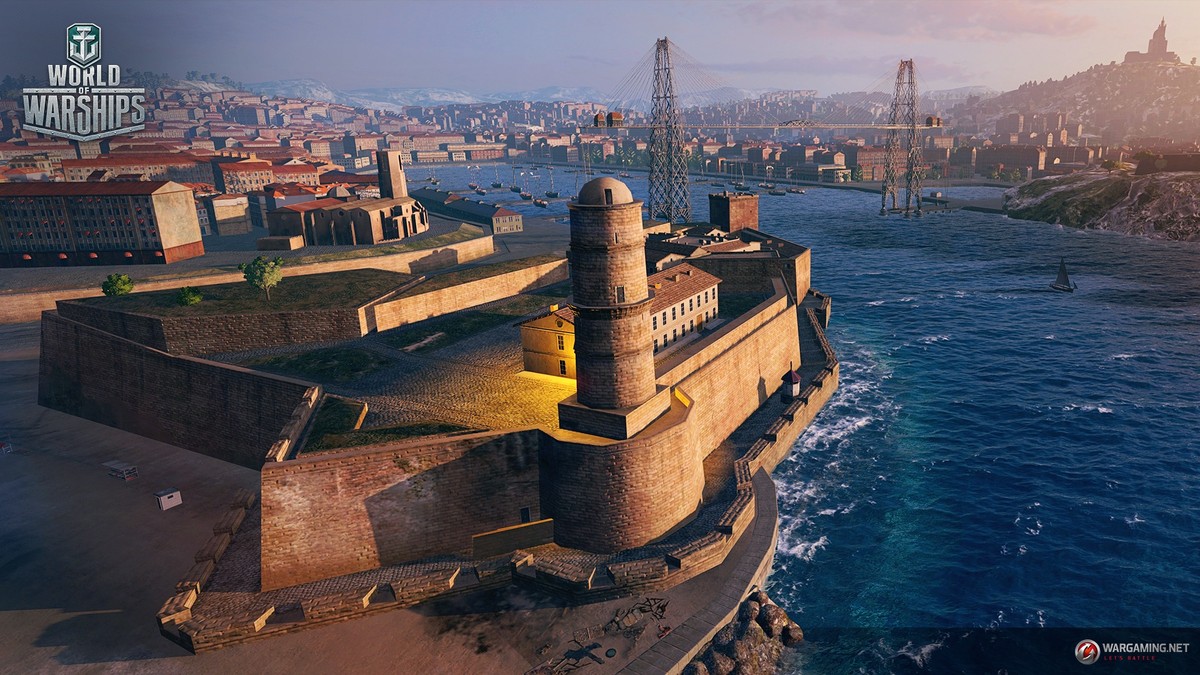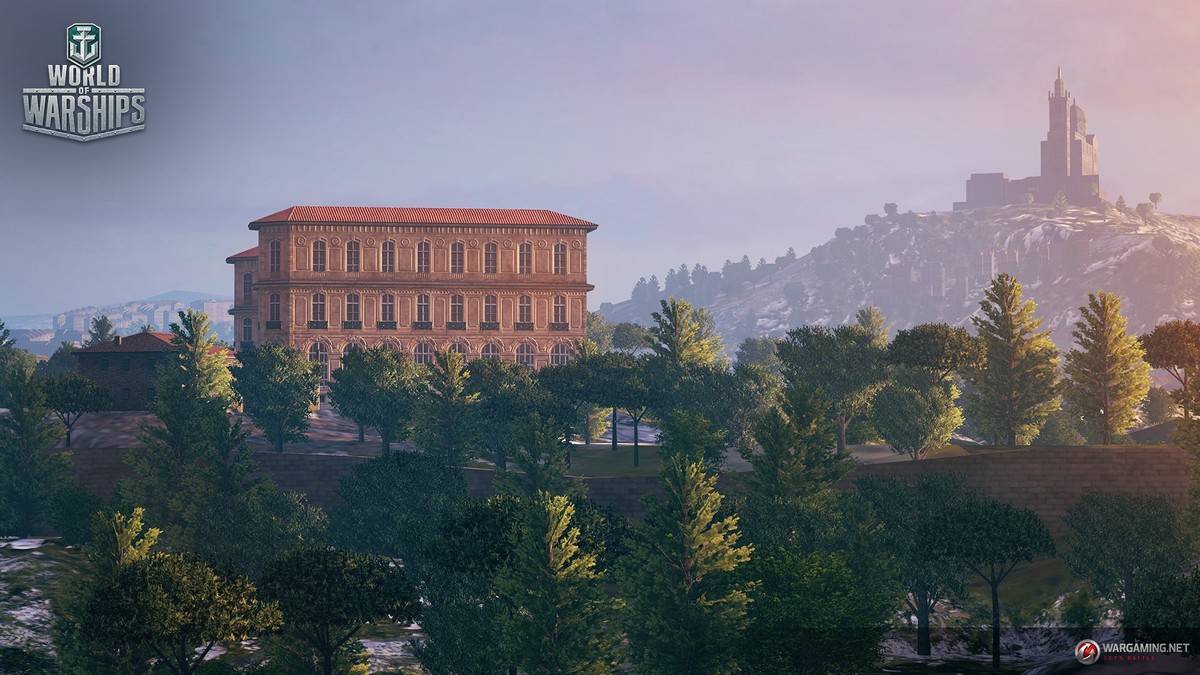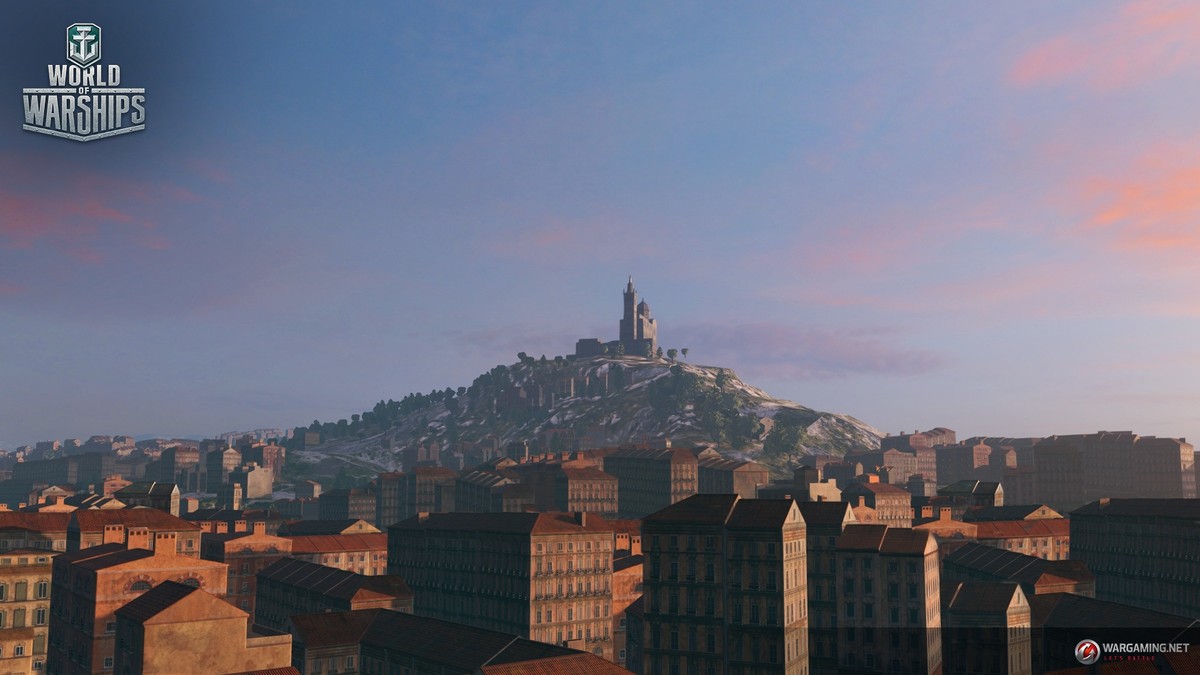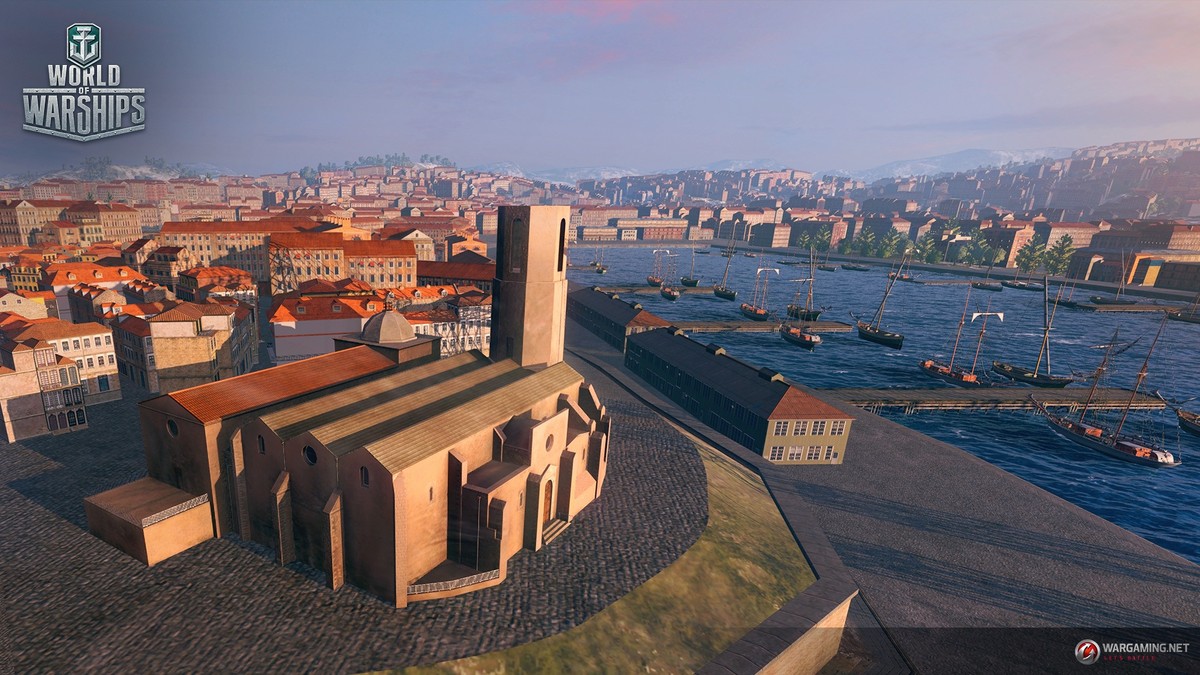Marseille, You Say!
With new French battleships on the horizon, let’s take a tour through historic Marseille – the oldest city in France, and one of the largest Resistance centers during World War II!
Known today as the Old Port of Marseille, the port was founded by the Greeks sometime around 600 BC, with its current appearance taking shape in the 19th century. Previously the main seaport of France, today it’s used for recreation, harboring pleasure boats, yachts, and others. Let’s take a tour!
The first thing that stands out is the Marseille Transporter Bridge. Designed in 1905 by engineer Ferdinand Arnodin, the Marseille Transporter Bridge once stood firm as one of the defining symbols of Marseille. Transporter bridges, also known as “ferry bridges,” were a common fixture in the early 20th century, though only a small number of them survive today. The Marseille Transporter Bridge was destroyed by German troops in 1944 during the liberation of Marseille, though there is still talk to this day of a possible restoration.
As featured in the famous Belgian comic artist Hergé’s The Adventures of Tintin, the Lioré et Olivier LeO H-242 Aircraft was a flying boat used for passenger air services by Air France starting in 1933. Only 14 mass-produced models of this aircraft are known to have existed. Also: Look closely on the sides of this plane, you just might notice a little secret we’ve left for you to find!
We’ve already featured some French cars at the Dunkirk Port, but cinephiles might remember this famous taxi from the 1951 classic An American in Paris. Our artists based this car on the Peugeot 402 and got creative with three different exterior customizations. Sharp-eyed motorists should be able to spot an interesting detail we added!
The famous Belle Poule was a naval schooner launched in February of 1932, a replica of an Icelandic fishing vessel. The Belle Poule was annexed by the Free French Forces for active service during World War II – in recognition for her service during the war, she is permitted to fly the French ensign with the imposed Cross of Lorraine. Presently, she can be found peacefully docked in the city of Paullac.
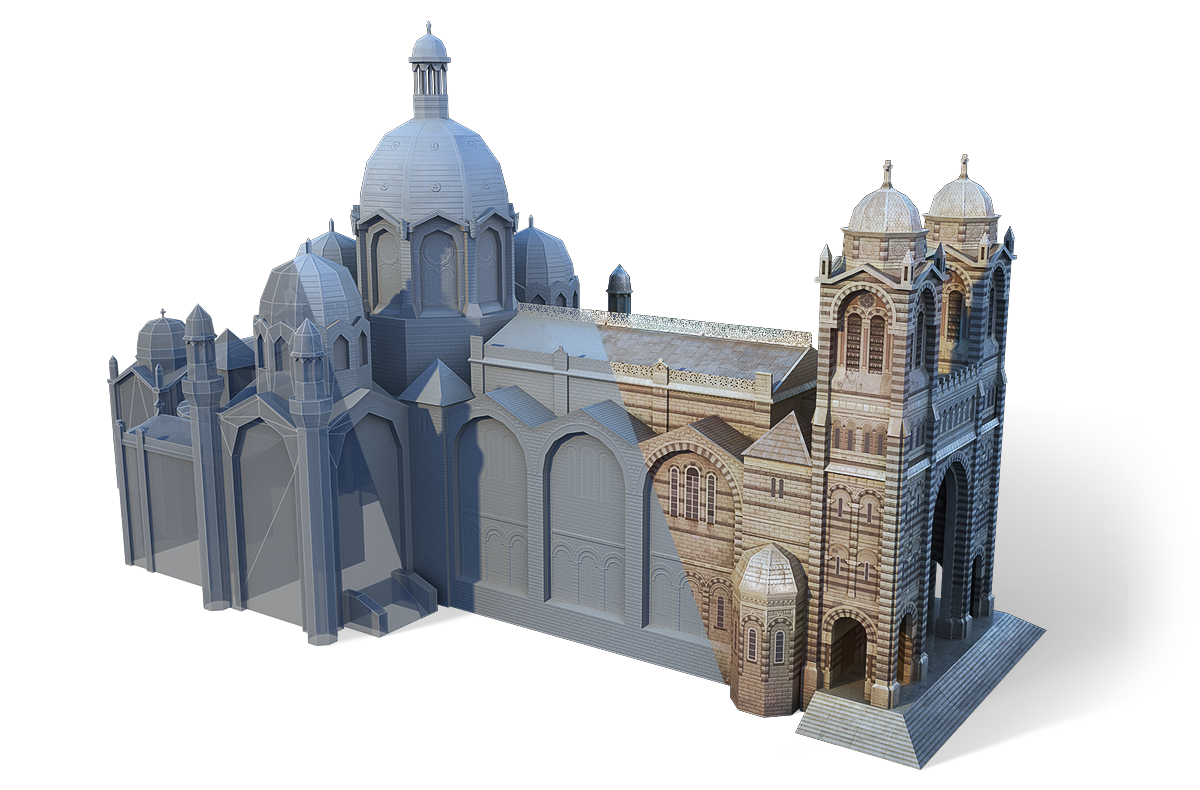
Marseille is known for many of its beautiful architectural landmarks, but the Cathedral of Saint Mary Major stands tall as one of its masterpieces. Constructed between 1852 and 1893, this cathedral has an interesting striped façade stemming from the white and green marble used during its construction. Even today, it’s considered one of the top tourist attractions in all of France!
Fort Saint-Jean is a surviving example of a medieval fortification, dating all the way back to the end of the 17th century. The fort was occupied by the German military during World War II, and much of the fort was destroyed or damaged during the liberation of Marseille in 1944. It was subsequently classified as a historical monument in 1964, and was restored and reconstructed throughout the rest of the 1960s.
Here you can spot the Palais du Pharo, the embodiment of the dream of Napoleon III. The emperor dreamed of a house built directly on the plateau near the sea, but the construction of such a palace proved difficult. It took nearly 12 years to build, from 1858 to 1870. The emperor was not allowed to spend a single day in his new palatial estate, as he was dethroned by the time construction was completed.
Perhaps the best-known symbol of Marseille, the world-famous Notre-Dame de la Garde Basilica was built on the highest natural point in the area and can be seen from virtually anywhere in the city. This basilica was originally built as a chapel in the 13th century and was later expanded to include a fort, as the church was considered insufficiently protected from an invasion. By the 18th century, its defenses were bolstered and the religious significance of the basilica waned to the point where buildings were destroyed, treasures were looted, and the fort itself was used as a prison. However, in the latter half of the 18th century, the basilica underwent reconstruction to its current form, being consecrated in 1864. Since then, the Notre-Dame de la Garde has become one of the most important holy sites for those on pilgrimage.
One of the oldest buildings in Marseille, and also one of the few to survive the bombings during World War II, is the Church of Saint-Laurent. This church was built in the 12th century and was partially dismantled during the construction of Fort Sean-Jean, and was used as a military warehouse during the French Revolution.
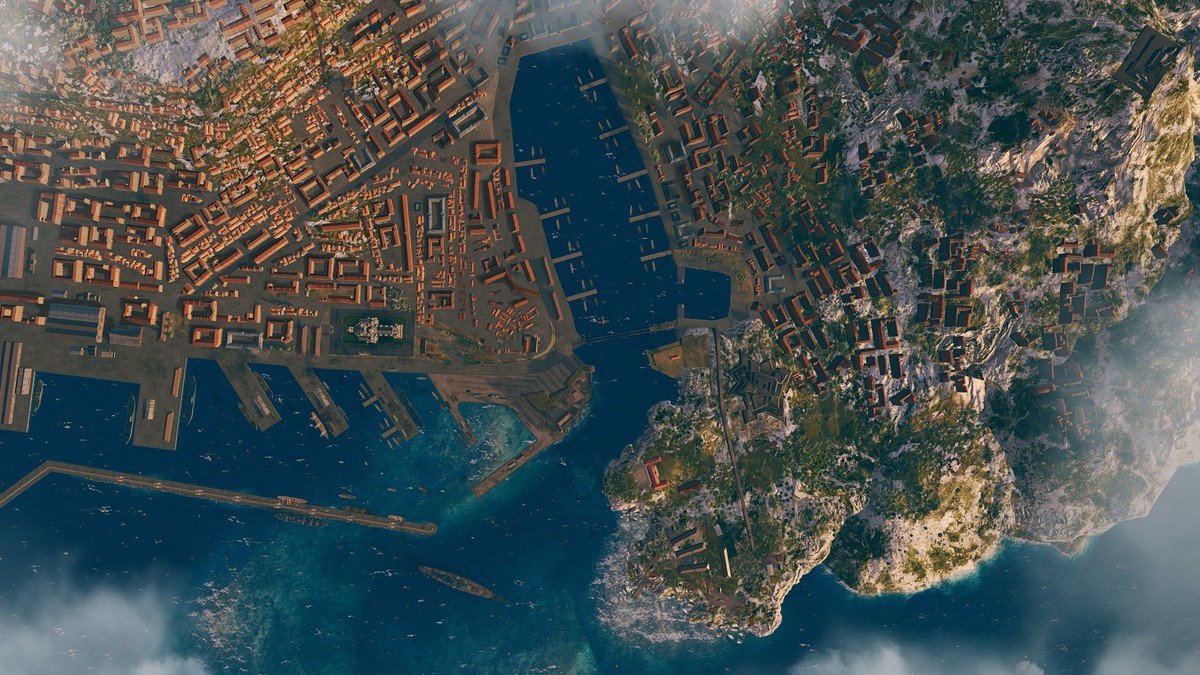
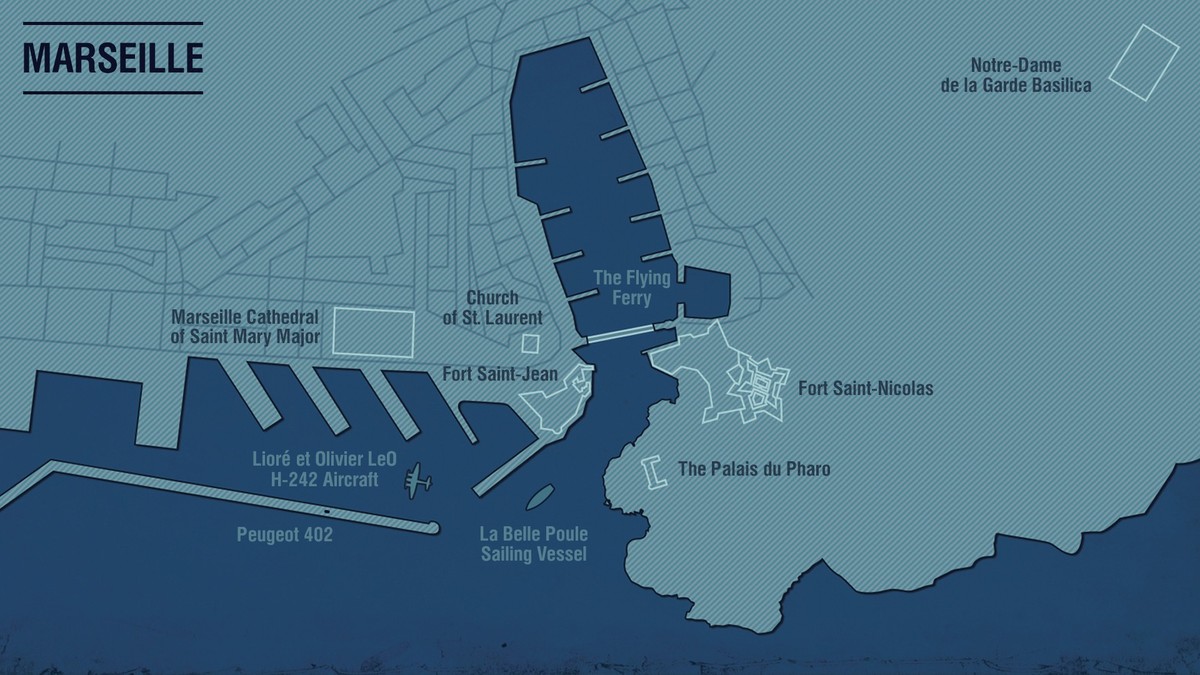
Capitani! Partiamo verso la riviera francese per conoscere il prossimo eroico portp. Aspettando l’arrivo delle corazzate francesi, facciamo un salto nella Marsiglia del periodo 1930 – 1950: non solo è la città più antica della Francia ma fu anche il centro della resistenza francese durante la II guerra mondiale. Il suo porto fu fondato dai greci nel 600 a.C. e da allora fu più volte ingrandito e acquisì la sua forma definitiva durante il XIX secolo.
Oggi questa zona perlopiù pedonale è conosciuta come Porto Vecchio di Marsiglia. Una volta era il principale porto francese, in cui si concentrava il traffico di molte navi; oggi vi sono attraccate solo imbarcazioni per escursioni, yacht e motoscafi. Ma ora facciamo un salto indietro nel tempo per fare un giro in questo iconico porto.
“Il ponte volante”
La prima cosa che si nota è il ponte volante progettato dall’ingegnere Ferdinand Arnodin nel 1905. A quell’epoca quel ponte era considerato il simbolo di Marsiglia, la cui fama surclassava perfino la basilica di Notre-Dame de la Garde. All’inizio del XX secolo i ponti volanti erano molto comuni e se ne trovavano in ogni parte del mondo. Sfortunatamente, ad oggi esistono ancora pochi di questi ponti. Il ponte volante di Marsiglia fu distrutto dalle truppe tedesche nel 1944. Attualmente sono in corso discussioni sul suo possibile recupero.
Aereo Lioré et Olivier LeO H-242
Sentite rumore di motori? Ecco l’idrovolante LeO H-242 che vola alto nei cieli. Questo aereo volò per la prima volta nel 1933. Era usato per il servizio di trasporto passeggeri dalla Air France, una azienda che aveva prodotto in serie 14 esemplari di questo velivolo. I fan del fumetto belga “Tintin” potrebbero riconoscere questo idrovolante. Osservate attentamente le fiancate dell’aereo: una di esse nasconde un segno segreto che abbiamo lasciato per voi.
Peugeot 402
Avete già trovato le macchine francesi al Porto di Dunkerque, ma quando viene nominata la Marsiglia, i fan del film o semplicemente i fan della cinematografia francese la assoceranno sicuramente al famoso film “Taxi” e, in particolare, al suo protagonista. I nostri artisti si sono sbizzarriti riguardo all’aspetto di questa famosa auto degli anni ‘30. Si basa sul modello della Peugeot 402 ma avevamo creato appositamente tre differenti personalizzazioni dell’aspetto: Alla fine abbiamo optato per quella che è già presente nel gioco, e gli automobilisti più esperti riusciranno a individuarne un dettaglio interessante.
Barca a vela La Belle Poule
La famosa goletta “La Belle Poule”, che ci è appena passata accanto, ha galleggiato per la prima volta nel 1932. È la replica di un peschereccio svedese e ha partecipato attivamente a varie operazioni durante la Seconda Guerra Mondiale. In riconoscimento al suo servizio durante la guerra, questa goletta ha il permesso di battere bandiera francese con la raffigurazione della Croce della Lorena. La nave è tuttora in servizio nella città di Pauillac.
Cattedrale di Santa Maria Maggiore di Marsiglia
Marsiglia è famosa per gli ensembles di opere architettoniche, e la cattedrale di Santa Maria Maggiore è ritenuta giustamente uno dei capolavori della città. È stata eretta tra 1852 e il 1893 e tutt’oggi si pensa sia una delle maggiori attrazioni turistiche della Francia. La sua interessante facciata a strisce è dovuta al marmo bianco e verde usato per la costruzione.
Fort Saint-Jean
Il Fort Saint-Jean è un esempio vivente di fortificazione medievale. La costruzione della sua torre iniziò nel XV secolo, ma il forte fu completato solo verso la fine del XVII secolo. Durante la Seconda Guerra Mondiale fu distrutto parzialmente dai tedeschi, ma fu restaurato come monumento culturale al termine del XX secolo.
Il Palais du Pharo
Sulla destra, è possibile notare il Palais du Pharo, l’incarnazione del sogno di Napoleone III. L’imperatore sognava una casa costruita direttamente sul ripido altopiano marino di Marsiglia, ma a causa delle difficoltà nella costruzione di un edificio di tale complessità, il palazzo richiese quasi dodici anni per essere costruito, dal 1858 al 1870. C’est la vie! L’imperatore non riuscì a passare nemmeno un giorno nella sua nuova residenza, perché fu detronizzato prima del termine della costruzione.
Basilica di Notre-Dame de la Garde
Questa basilica fu costruita sul punto naturale più alto di Marsiglia e, virtualmente, può essere vista da qualsiasi punto della città. La cattedrale ha una storia interessante. Originariamente era una cappella medievale del XIII secolo che fu ampliata all’inizio del XVI secolo.
Successivamente fu deciso che Marsiglia non era sufficientemente protetta e, a causa della sua posizione molto adatta allo scopo, la chiesa doveva diventare parte del forte. Nel XVIII secolo furono studiati diversi modi per migliorare le difese di Marsiglia e l’importanza della basilica fu dimenticata; furono distrutti edifici, rovinati tesori, e lo stesso forte fu utilizzato come prigione. Per fortuna, a metà del XVIII secolo furono avviati i lavori di ricostruzione della chiesa. La sua consacrazione si svolse nel 1864 e, da quel momento, la cattedrale è diventata un’importante meta di pellegrinaggio.
Chiesa di St. Laurent
Questa chiesa fu costruita nel XII secolo ed è uno degli edifici più vecchi di Marsiglia, nonché uno dei pochi a essere sopravvissuto ai bombardamenti della Seconda Guerra Mondiale. L’edificio, che assomiglia a un castello di sabbia, fu parzialmente smantellato per la costruzione del Fort Saint-Jean e fu usato attivamente come magazzino militare durante la rivoluzione francese.

